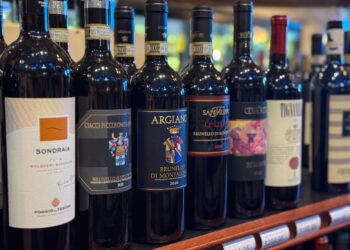By Yvonne Martinell EBS CONTRIBUTOR
DELL—Our family has raised cattle in southwestern Montana since 1893, so we have weathered many changes.
Over the past several decades, Americans have changed the way they see predators. Once treated as pests, wolves and bears are now conserved as part of the natural landscape. As a result, we have more wolves amid our cattle and are seeing more grizzly bears show up where they’ve not been seen for decades.
Many people who live in Montana or come to visit enjoy hearing wolves and or seeing a bear. But for cattle producers, having these animals nearby can be very costly. In 2013, we lost 38 calves and 8 cows from our herd, in addition to our documented losses. They just disappeared.
Thankfully, there are effective tools that farmers and ranchers use to mitigate the impact wildlife have both on their bottom line and their sense of safety. But we need our elected officials in Helena and Washington D.C. to make sure these tools are funded and put in place.
We have seen these tools work. Every summer, we graze our stock on a mix of private ground and leased public range in the Centennial Valley. We have a hired hand who tends to sick animals, mends fences and the like. But one person can only do so much.
Since 2014, the Centennial Valley Association has hired range riders to help prevent losses amid the 12,000 head of cattle that graze the Centennial Valley. Range riders spend long days in the saddle, looking for signs of predators. They maintain remote trail cameras to record wildlife movements and keep look out for sick livestock and carcasses. Just having more people in the area can help deter predators.
The CVA range riders serve six ranches. We have seen the benefits in terms of reduced losses. One time, the CVA range rider found a calf of ours that was bitten, but not killed, by a bear. That calf could be doctored and salvaged.
Range riders also allow us to detect sick or dead livestock earlier. That helps determine if an animal was lost to a wolf or bear, as opposed to another cause such as eating poisonous plants like larkspur. This is good for both wildlife managers and ranchers to be able to accurately pinpoint the problem.
Range riders are just one tool in the toolbox that keep stock safe and predators behaving more naturally. Other preventative tools are guardian dogs, electric fencing and, systems for securing garbage and removing livestock carcasses.
Sometimes, if grizzly bears or wolves kill livestock or threaten human safety, they must be destroyed. But an ounce of prevention is worth a pound of cure.
Ranchers often invest their own money in these tools, depending on the needs of their individual operations. However, these tools are expensive and there is need to expand their use.
It seems only fair that society at large pitch in for these tools, since society at large wants and benefits from the wolves and bears. Livestock producers and conservationists alike are asking Gov. Gianforte and Senators Jon Tester and Steve Daines to work together and develop reliable funding sources for these kinds of tools.
Ranchers know that if you degrade the resource, you won’t have it very long. We put a lot of time and effort taking care of Montana’s natural resources. We provide wildlife habitat, control weeds and conserve water.
For example, surface water is a scare and life-giving resource in the high dry valleys of Montana. Ranchers put a lot of time, money and effort into building and maintaining water tanks. These water sources benefit cattle, of course, but are magnets that benefit all sorts of birds and animals. These kinds of contributions are overlooked by the public at large.
If I could ask for one thing for Montana’s rangelands it would be more cooperation. We get more done when we work together. Montanans can resolve many problems when we work together. We do this with weed control and water conservation and should cooperate more when it comes to wildlife.
Working to put more wildlife conflict prevention tools in place in the working landscapes of Montana would be a great place to start.
Yvonne Martinell is a rancher and chairwoman of the Centennial Valley Association.














